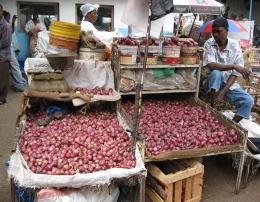 From our village studies in Ethiopia, Ghana, Kenya, Malawi and Tanzania, five key overall results are emerging.
From our village studies in Ethiopia, Ghana, Kenya, Malawi and Tanzania, five key overall results are emerging.
These have led us to identify some emerging lessons for policy makers who have a role in promoting commercialisation in these countries.
Insights from the village studies
- Some small farmers can successfully intensify their production, sell their commercial crops, gain more returns per unit of land and labour, and raise their incomes;
- The main driver of change is usually the domestic market as small farmers ship perishables (vegetables, fruit, milk) to towns and cities. Often the initiative is largely local, between farmers and traders, with limited external support;
- Change is gradual and marginal. Small farmers typically diversify — not specialise — when they commercialise, adding enterprises rather than sacrificing food crops. While this ‘cautious commercialisation’ ensures that risks are kept low and family food self-sufficiency remains a primary goal, some opportunities for specialisation and further intensification may be missed;
- Farmers intensify by applying more labour (including hired labour), fertiliser, and sometimes improved seed and agro-chemicals. They pay for these overwhelmingly with their own cash savings, without access to formal bank credit or advances from traders or input dealers. Credit is thus not a barrier to commercialisation, but it may slow progress and prevent farmers from fully achieving their plans.
- The better-off small farmers take up the opportunities more readily. Women farmers are often at a disadvantage in access to land, water, and markets. Without panel data we do not know the dynamics. It could be that commercialisation widens social differences, but equally the demand for hired labour is strong in some cases, so it is possible that poor households benefit from more work and better pay. There may also be benefits for others when commercialising small farmers spend their extra income.
Pointers for policy
Assessing the public role in promoting the commercialisation seen here reveals a paradox:
- Few cases result from programmes to commercialise, so comprehensive direct action by the state is not necessary for commercialisation; yet
- public action is critical in two areas: providing a rural investment climate that allows farmers and traders to invest and innovate; and supplying roads, schools, health posts, clean water, research and extension (that is, rural public goods).
While comprehensive public action is not needed, strategic interventions by Ministries of Agriculture can be valuable, as seen with the upgrading and establishment of small-scale irrigation.
Five lessons for policy makers emerge from this theme:
- Encouragement to rural enterprise after the painful reforms of the 1980s and 1990s has paid off. Governments should take pride in this and guard against reverses;
- Investment in rural public goods pays off. These are simple, straightforward investments. Small farmers do not need magic bullets, just decent roads, schools, clean water etc;
- Ministries of Agriculture do not have to solve all the problems of farmers, but limited, strategic support is valuable. In particular, when small farmers have commercial crops, their interest in technical advice and innovations rises; research and extension are therefore very likely to pay off handsomely;
- Even if some small farmers can commercialise with their own cash, a lack of capital limits investment, further intensification and gains. Rural financial systems need to be developed — but with care, given the failures of ambitious public programmes in the past. It may be possible to build on promising initiatives such as the M-pesa money transfers and the small-scale loans of the Equity Bank in Kenya.
- Although this programme did not highlight gender issues, female disadvantage stands out from the evidence. Agricultural policy will not transform longstanding imbalances in gender relations, but there are useful things to do, including:
- acknowledging and support women’s rights to land and water;
- investing in water supply and other things that can save women’s time; and
- providing extension with female farmers in mind.
